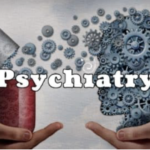William James, widely considered to be the father of modern psychiatry famously spoke in 1890 of an unconscious system in our brain/body.
He postulated that if he were to take an Eskimo and put him on the plains of the Serengeti, having never seen a lion before, or even heard of one, would immediately feel terrified that his life was threatened, and begin running.
What was James speculating?
He was developing a model of unconscious perception. His Eskimo would consciously perceive this lion through his visual system. The image would map onto his visual cortex after passing through his amygdala. Immediately upon entering his amygdala, signals would be sent down the sympathetic nervous system into his body.
His body would begin to react with rapid heart beating, possibly profuse sweating, increased respiratory rate, reduced digestive input, and his muscles would immediately become activated. The Eskimo would begin to run for his life, even though consciously he would not know why.
What we know now is that unconsciously, he would also be, by a process of interoception, reacting to the signals in his body that through evolution, have indicated the necessity to flee. It was only afterward that his conscious brain could begin to justify his reaction and his actions of running by assuming that this must have been a dangerous creature. Our Eskimo’s body could tell his mind things that he consciously could not grasp.
This was the critical beginning to brain/body connection, as well as the postulation that an unconscious brain is responsible for perceptions, emotion, and igniting behaviors, much too quickly for the conscious brain to process.
Exploring the Concept of The Unconscious
The concept of the unconscious was embraced and explored, then popularized by Sigmund Freud, an Austrian neurologist, and the father of psychoanalysis. He is credited with much of the groundbreaking psychological work that went into understanding the unconscious. Part of that work was to identify that mental states, symptoms, and physical states were being driven by unconscious conflicts. At the root of these conflicts were body-based drives seeking expression as ideas, impulses, desires, and behavior, but which were deemed unacceptable.
He saw the conscious mind, the part of the iceberg above the water, as being constantly influenced by the unconscious. Part of the function of the conscious was to try to gain some expression of these repressed unconscious drives but in a socially acceptable manner.
All of this was not accessible to consciousness except through dreamwork, hypnosis, focused attention in psychotherapy, slips of the tongue, and humor, and symptoms. In other words, it required physical actions before awareness could be brought to the contents of the unconscious. It is only through actions and subsequent awareness that can allow reflection.
Although a great deal of groundbreaking work has evolved in the psychological realm from Freud‘s work, he never departed from believing that the source of drives was also in the body, a conclusion that is often forgotten but is critical to understand
Psychiatry's Wrong-headed View of Mental Health
As the 20th century progressed, psychologists made Freud a whipping post, citing misogyny, unawareness of women, and the debunking of childhood drives. In a rather shameful, from an academic perspective, attempt to debate or refute certain ideas, all of his contributions were tossed aside. Psychiatry stepped in, disavowing William James, separating brain from body, and attributing everything to “chemical imbalances“. Motivated by insurance companies and big Pharma, psychiatry took on an extremely narrow, and now completely wrong-headed view of mental health.
It was not until cognitive psychologists began to use the fMRI that scientific proof of the unconscious was revisited. In an article published in Nature Neuroscience in 2008, it was found that subjectively “free“ decisions are determined by brain activity up to 10 seconds ahead of consciousness and awareness. Many studies have followed since then expanding upon this.
Within the last 10 years, neuroscience has made major contributions to the existence of unconscious processing. Long term memory consists of explicit memory and implicit or unconscious memory. Implicit memory consists of habits, skills, unconscious relational reenactments, and priming. Driving, dancing, sports, etc., are all unconsciously encoded.
The Discovery of Interoception
Of even greater significance has been the discovery of Interoception - the process by which the nervous system senses, interprets, and integrates signals originating from within the body. This signaling provides a moment to moment mapping of the body‘s internal workings at conscious and unconscious levels.
Interoceptive signaling is an important component of reflexes, urges, feelings, drives, adaptive responses, and cognitive and emotional experiences deeply involved in allostasis, body regulation, and survival.
Freud and James were intuitively far more correct than anyone could conceive. Next steps: how can we read our own unconscious, understand its influence on our behavior and wellbeing, and harness the power of the unconscious to make our lives better? More to come.








